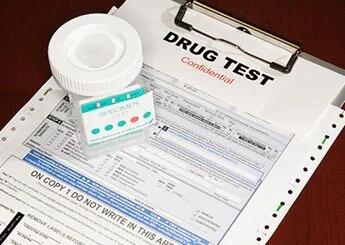Today, we want to give you an overview of the Federal drug and alcohol testing regulations defined by the U.S. Department of Transportation (DOT). This way, you can comply without any issues!
Who Must Be Tested?
According to regulations, drug and alcohol testing is a must for:
- CDL drivers who operate a gross vehicle weight rating (GVWR) of over 26,001 and transport over 16 passengers, including themselves.
- CDL drivers who transport hazardous materials on public roadways.
- Anyone required to have a CDL, including government-employed drivers.
- “Owner operators” of foreign origin.
- Part-time drivers.
Drivers who only operate CMV’s on private property don’t have to be tested.
What Tests Are Required?
CDL drivers must be tested at key points, here’s a short overview:
- During the pre-employment stage, CMV drivers who will go on public roads need to present a positive test to receive authorization. They will need to be enrolled into a Randoms Program, also called a D&A Consortium.
- If drivers with a commercial driver’s license are involved in a fatal accident or receive a traffic ticket as a result of an accident that caused injury or disabled the vehicle, they must be drug and alcohol tested within 8 and 12 hours respectively.
- CDL drivers will receive random and unannounced drug or alcohol tests, whether they’re on or off duty.
- DOT-trained supervisors can order drug or alcohol tests if a driver shows any signs of substance abuse, such as body odor, impaired speech, change in behavior, etc.
- As stated in 49 CFR 40.67, drug and alcohol testing is a part of the return-to-duty process and they require direct observation.
- As ordered by SAP, drivers must undergo follow-up drug and alcohol tests within a year after returning to duty. Those who refuse or test positive will undergo follow-up tests for up to 5 years.
What Are the Testing Procedures?
Once drivers get a drug test notification, they have to report immediately to the collection site. As the DOT drug testing states, urinalysis is the only accepted method.
Direct observation might be required during testing if there are any issues. If the driver leaves before providing a specimen or if they’re unable to do so, it will be taken as a refusal.
Once the sample is analyzed, the lab will send the results to an MRO. If it’s positive, the MRO will notify the driver and their employer. Five-panel testing is required for substances like marihuana, cocaine, opiates, amphetamines, methamphetamines, and phencyclidine.
What Are the Consequences of Testing Positive?
Testing positive for drugs, registering an alcohol level of .04 or higher, or refusing to take drug or alcohol tests will result in removing the driver from operating commercial vehicles on public roads.
Drivers can begin their return-to-duty process in any of the Alcoholism Screening and Brief Intervention Programs their employer presents. This process is done with a qualified SAP and it can take a while, which means they’ll be unemployed for an extended period.
Want to learn more about drug and alcohol testing regulations?
Click here to make an appointment with Purcells CTPA & Random Manager!

